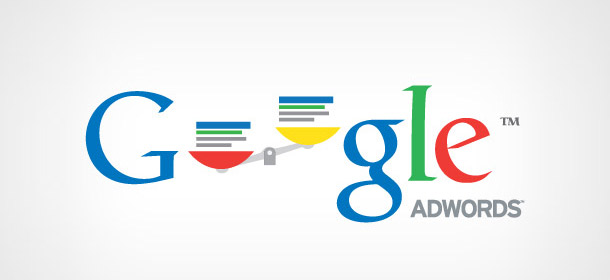SEARCH ENGINE MARKETING (SEM)
Today we know Google as the dominant force in search as it continues to lead by a large margin. Google has run away with the web search market, and almost no one is chasing. In fact, it is so prominent that “google” has been listed as a verb in the Merriam-Webster dictionary for nearly 7 years.

But if Google is free, how is it so powerful and make so much money?
Spoiler alert: advertising!
Google didn't make money until it started auctioning ads that appear alongside the search results. Surprisingly, 97% comes from Google Adwords’ online pay-per-click advertising. The company’s Internet search engine is the hub of an advertising system that generated $58.85 billion in revenue last year.
We live in an exciting time for the small business owner. Google may be a global search giant, but there are many ways and tools (Must-have Tools for SEM) to leverage the power of search to promote your small business to local customers through search engine marketing.
When it comes to digital marketing, there are two main avenues for promoting your business website: SEO and PPC. Although you may be debating on which method is a better allocation of your funds (organic search engine optimization or pay per click advertising) both are viable options for improving your web presence and increasing the amount of traffic flowing into your site. However, the degree to which you’ll want to invest in each of these methods will vary based on your company’s unique needs and priorities.

This SEM Guide will help to save you time, hassle, and money when fighting for better search engine rankings, lowering your pay-per-click costs, and getting exposure on social media.
SEM VS. SEO
Confused by search engine optimization and search engine marketing? The phrases SEM and SEO are similar, and both terms are used interchangeably. However, there is an important difference between the two, and it isn’t complicated. Search marketing encompasses both SEO and PPC marketing.
Search engine optimization (SEO) can be described as the practice of optimizing the content of your websites using strategies and tactics to naturally boost search engine listings and achieving a higher ranking in search engine results pages (SERPs).
In most cases, the higher a website naturally ranks in the SERP, the more likely the website will be visited by a user. It is, therefore, essential to achieve high scores on both on-site and off-site ranking factors since 75% of users never scroll past the first page of search results.(http://www.searchenginejournal.com/24-eye-popping-seo-statistics/42665/)
SEO
The first thing new businesses must know is that SEO should be the foundation of a business, and that everything starts with the words online-users type into a search box. Google uses complex algorithms to determine (from the search query) which websites to include in their index and the order in which these sites appear in the search results.
Search engines have tried for years to figure a way to return the best results to the searcher. In order to accomplish that, they take into account on-site SEO factors such as title tags, description tags, and most importantly content.
ON-SITE SEO:
Keyword research is quite possibly the most important part of SEO and it is the most valuable and high return activity in the search marketing field. You cannot begin to plan for a campaign unless you know which phrases you are targeting because ranking for the right keywords can make or break your website.
The page title tag (technically called title element) is arguably one of the most important on-site SEO factor. The page title must be highly relevant to the page it refers to and keywords in page titles help your pages rank higher in the Search Engine Results Pages (SERPs).
When choosing your title tag, include your keywords naturally and strategically, without keyword stuffing your title. Don’t choose a title that has no relation to the content on the page. Title tags are used on SERPs to display preview snippets for a given page, and should be unique to other pages on the site. So, if your document appears in a search results page, the contents of the title tag will usually appear in the first line of the results.
Meta description tags, while not important to search engine rankings, are extremely important in gaining user click-through from SERPs. Recently, page descriptions have started to have less to do with engine optimization and more to do with actually persuading searchers to visit your site. Descriptions should tell audiences what they can expect to find on your page, and should work to persuade those users to click through. In a way, meta descriptions are like mini Calls to Action.

Google, however, doesn't think your title and description tags are good enough.
The content of a page is what makes it worthy of a search result position. It is what the user came to see, and, thus is extremely important to the search engines.
Blogging is one of the most powerful ways to promote your company/website online. Write a blog of your own for your company/website and include lots of unique content. Be precise in what you're trying to convey for the users in your blog entry and promote your blog in blog directories and blog search engines.
OFF-SITE SEO:
Off-site SEO is as important as on-site SEO. If you want your SEO campaigns to be successful you have to do both. However, off-site SEO has to be done after the completion of on-site SEO. In general, off-site SEO has to do with promotion methods (beyond website design) for the purpose of ranking a website higher in the search results.
Unlike on-site SEO, off-site SEO refers to activities outside the boundaries of the webpage. The most important includes things like link-building and social interaction. Back-links are other pages on the web that link to your posts. A web site that is useful is more likely to have references (links) from other websites. Link building is the most popular off-site SEO method.
Social media is another part of SEM and provides another way for businesses of all sizes to generate brand awareness, direct traffic to the site, and to boost SEO. Social media is also part of off-site SEO and if you think about it, it’s also a form of link building.
It should be noted that almost all of the links you get from social media sites are “nofollow” but this does not mean that they do not have any value. Social Media mentions are gaining ground as ranking factors and proper configuration of social media profiles can also boost SEO. So, promote your latest news and views in your social media presence and ask/invite others to like and share.
Search Engine Optimization and achieving high rankings comes down to one thing: Relevance. It goes without saying that ‘Content is King’ and its quality content that meets the needs of visitors to your site that will make you reign supreme. When proper search engine optimization is applied to a professionally developed website, your site increase in relevance and grow its authority.
PPC
If you have ever noticed the advertisements that appear alongside search results on Google and other search engines, you are already familiar with pay-per-click, or PPC advertising. Pay-per-click (PPC) advertising can be an effective way to drive traffic to your website quickly, but small businesses too often make mistakes that undermine their campaigns.
Pay per click (PPC) advertising seems pretty straightforward. You target wisely, select tempting keywords, to create an irresistible ad. Hot prospects then click on your ad, (you only pay for the ones that “click through”) and hopefully you convert some to buyers. But then there’s this auction “thing”.
Unlike traditional advertising, with pay-per-click you have to bid on placements. It’s like an auction, and competitors might outbid you. PPC ad campaigns are completely controlled by the advertiser, however. You decide which keywords should bring up your ads, you write the copy, and you decide how much you want to pay. That seems risky but many thousands of businesses use PPC advertising every day (and Google makes billions of dollars off of PPC), so obviously it works.
The idea behind PPC, as with any form of online advertising, is that the amount you spend on clicks is far outweighed by the revenue you'll gain once visitors arrive at your website. As such, pay-per-click advertising is an investment. Bid cost is determined by how competitive a keyword is, so you want to find the sweet spot of less competitive (thereby less expensive) and yet highly relevant keywords.
Google Adwords
Google AdWords is Google's advertising system. It is by far the most predominant platform and search engine used for paid ads. Advertisers bid on certain keywords in order for their clickable ads to appear in Google's search results. With every search, Adwords considers thousands adds and will only show those that are most likely to provide what the person was looking for. After all, Google aims to always provide only the most relevant ads when someone searches on google.
The auction gets run billions of times each month. Once a query is made on Google, the search engine processes the request and runs the auction which will then determine the ad's position, where it will appear, and the CPC. Once advertisers identity keywords they want to bid on, Google then enters the keyword from your account that it deems most relevant into the auction with the maximum bid you've specified as well as the associated ad.

So how do you know if your ad is relevant and useful to someone looking at it? This is reflected in Quality Score. In AdWords, Quality Score is the alpha and omega. If you don’t know what it is, you’re doing it all wrong. Adwords calculates Quality Score on the fly for each of your key words by looking at a variety of factors including relevance to the words people searched for, whether or not people found your ad relevant and clicked on it, the quality of your landing page and many more.
Increasing your click-through rate is the most important thing you can do in your AdWords campaign. Not only does it get you more traffic, it actually makes that traffic cheaper. So, the ad’s click-through rate (CTR) is the single biggest factor in determining Quality Score because Google allows users to practically vote with their clicks.
Relevancy is the second largest determining factor of Quality Score. Google determines relevancy by analyzing the language in context in an ad or query, and determining how well it relates to a keyword. Google then uses relevance to make sure that only useful ads are displayed to users and prevents advertisers from paying their way onto a search that is unrelated to their product or service.
The third component of Quality Score is landing page quality. An ad is only useful to users if the landing page it leads to helps them find the information they are looking for. A high quality landing page should have revenant, original content, be easily navigable with quick load times, a minimum of pop-up (or pop-unders), and be transparent about the nature of the business.
Based on these insights, Adwords assigns every keyword a quality score of 1 to 10, with 10 being the highest and 1 being the lowest. Each keyword’s Quality Score is updated regularly, taking into account any changes you made and the number of clicks you received.
Your ad’s Quality Score plays a key role in determining your ad’s position, and how much you will pay for a click. In general, the more relevant your ad is the higher your Quality Score, the better your position and the less you will have to pay for a click. In other words, Google rewards you for providing an ad that provides a positive experience to people who search for your products.
Signing up for Google AdWords is free, and setting how much you’re willing to pay each time someone clicks your ad is easy. You can always change it later at any time. You only pay when someone clicks your ad and visits your website. In other words, when your advertising is working. However, it takes time and skill to do it effectively since pay-per-click marketing is no trivial matter.

SEM is a broader term than SEO and no SEM campaign is complete without SEO. SEO aims to provide better organic search results, and SEM uses the search engines to advertise your website or business to Internet customers and send a more targeted traffic to your Web site. It is important to note that you should never use the terms SEO and SEM interchangeably, because although they work hand in hand, they are not the same term.
Many marketers debate whether one is better than the other. As an Inbound Marketer, I would argue that organic SEO is the best approach. Organic SEO is less costly long-term as you establish search credibility because staying on top of search engine results through PPC alone can be an expensive endeavor.
